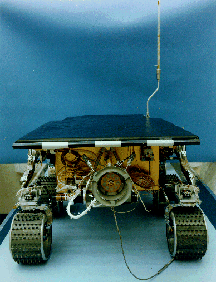Introduction
Definition of Life
Motivation
Preliminary
Steps
Present Life
Past Life
Geological Survey
Sample Collection
Spectroscopic Analysis
Organic Analysis
Biology Experiments
Thin Section
Isotope Analysis
Experimental Design
Alpha-Proton X-Ray Spectrometer
APX, a relatively new type of spectrometer, is also a vital component to the spectroscopic analysis of Mars. The instrument consists of alpha particle sources and detectors for back-scattered alpha particles, protons and X-Rays. APX is able to determine elemental chemistry of Martian dust (above and sub-surface) and rocks for most elements except hydrogen. The instrument works by three types of interactions of alpha particles with matter: electron scattering of alpha particles by nuclei, alpha-proton nuclear reactions with certain light elements, and excitation of the atomic structures of atoms by alpha particles. This results in a spectrum of emissions of characteristic X-rays. Typically, this is accomplished by exposing the sample to a radioactive source that produces alpha particles with a known energy, and to collect and analyze the energy spectra of alpha particles, X-rays, and protons emitted by the sample. This in return is able to give determine what elements and how much of each element is present in the sample.
The major advantage of APX Spectroscopy is that the instrumentation is mobile and can be deployed on a remotely controlled robot. APX is definitely an instrument that should be included on at least one LMR and a main apparatus should also be located in the permanent habitat. This is an image of an APX unit on a rover (http://mpfwww.jpl.nasa.gov/mpf/sci_desc.html):
